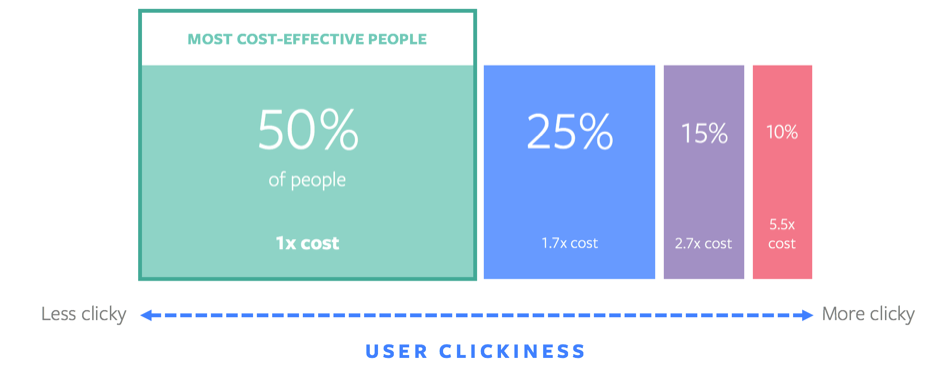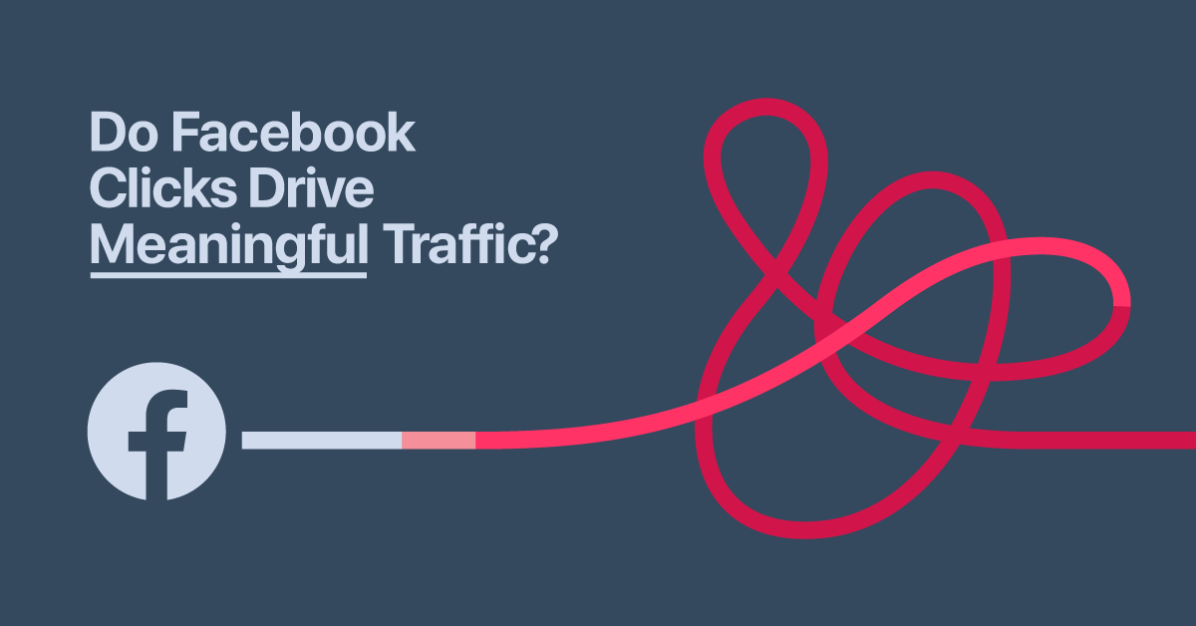What we learned about purchase intent from A/B testing two Facebook optimizations.
The days of post engagements and link clicks are long gone. The world of Facebook advertising is larger, more complex, with more powerful objectives fifteen years later. And Facebook will be the first to tell you – using post engagements and link clicks as a measure of intent? It may not be driving the traffic you want.
According to a 2011 study by Nielsen, there is some evidence that clicks don’t correlate to real business objectives like purchase intent. Facebook’s Marketing Science team has backed up this claim in recent years. The clickiest people are often the most expensive to ultimately convert. In effect, you may actually be driving expensive audiences with your ‘cost-effective’ traffic campaign.

If you’re not convinced that these old objectives are obsolete (I mean, why doesn’t Facebook deprecate them?), don’t worry. We weren’t totally convinced either. That’s why we set up a split test to prove out the effectiveness of traffic versus a more direct campaign objective. Here’s how we did it.
Traffic A/B Split Test: Optimizing towards Landing Page Views vs. Add to Carts
Observation: like most advertisers, the prospecting audiences for our test advertiser did not generate positive ROAS within a traditional conversion campaign. We assumed that these users needed to be nurtured through the sales cycle, driven to site and then retargeted. We wanted to ensure we were investing in this cycle most efficiently.
Question: which Facebook campaign objective and optimization drives more meaningful traffic to site (measured by purchase intent)? Traffic optimized towards Landing Page Views OR Conversion optimized towards Add to Carts?
Hypothesis: the Conversion objective will find more qualified users who show more intent to purchase via Add to Cart volume.
Key metrics: Cost per Landing Page View (CLPV), Cost per Add to Cart (CATC).
Results: the Conversion campaign drove positive purchase volume, $2.51 CATC, $0.51 CLPV. The Traffic campaign drove no purchase volume, $371.37 CATC, and $0.40 CLPV. The results are staggering. At only 27.5% higher CLPV, the Conversion campaign drove 2,832 Add to Carts versus the Traffic campaign’s 10 Add to Carts.
Implication: if you’re an advertiser with sales objectives as your main goal, your Facebook strategy should be built on Conversion and Catalog Sales campaigns. The top ROAS-driving segments are likely retargeting pools that need to be refreshed with net new users. Before you run a traffic campaign to supplement, considering testing a Conversion campaign optimized towards a meaningful site action like Add to Carts.
Note that you will need standard pixel events placed on your website to measure and optimize towards different site actions in the checkout flow. And a pro tip – when you are testing different optimizations, consider leveraging CBO to improve your overall CPA efficiency.
If you have any questions on testing strategies or our results, contact our team . We’d love to talk!
